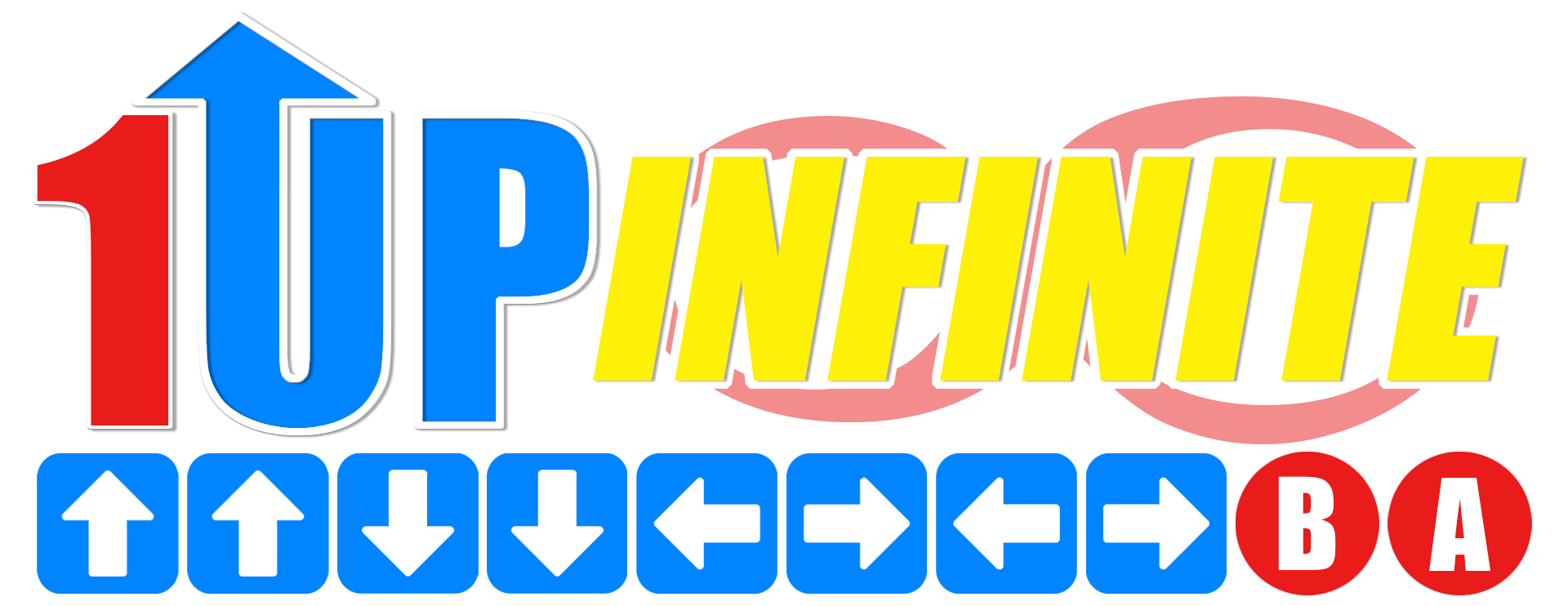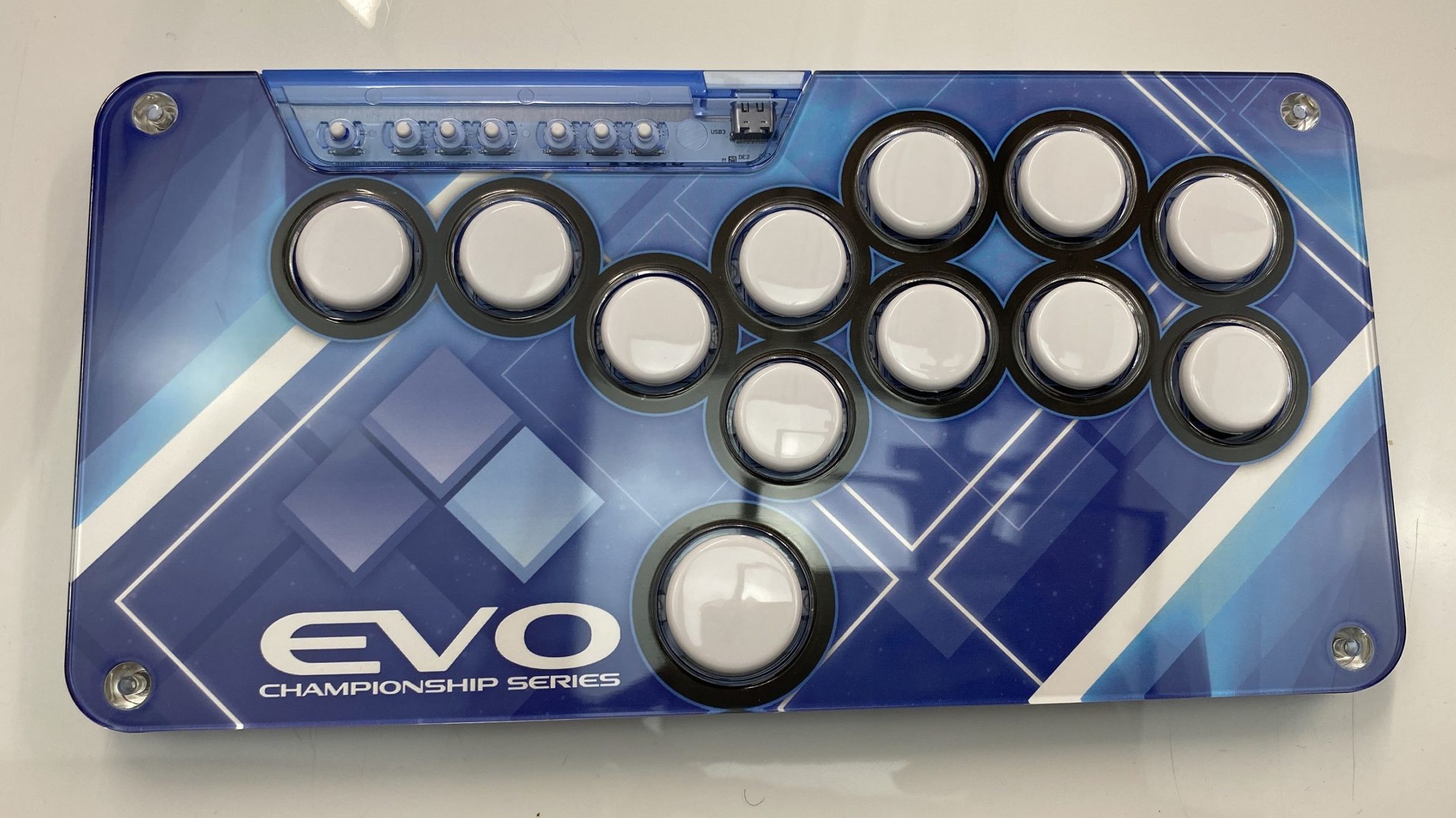I've teased this product since EVO weekend that I've picked up a very special controller. Calling it a "fight stick" may not be the most "accurate" thing to call the Snack Box Micro, but for consistency's sake, I will call it such. The Snack Box Micro as the name suggests is a smaller version of the Snack Box, the flagship fight stick from Junkfood Customs Arcade. The Snack Box V2 is its current iteration, with options available for traditional, buttons only, and WASD keys from a keyboard. For a better example of what a V2 looks like in comparison, here's a friend at my locals yesterday with his.

The EVO version was sold exclusively at the EVO 2022 event with online orders going up the same day. Due to the high demand for fightsticks such as these, the online orders were filled in record time. This meant that buying a Micro at the event was the only way to ensure you had one to take home. The EVO Snack Box Micro is actually a variant of the newer artwork case edition of the Micro with the same specifications. The EVO exclusive artwork, back plate, and traveling bag are colored "Royal Blue," representing the official color of Las Vegas.
Now that we got the introduction of the Snack Box Micro out of the way, what gives? When did swapping out the lever for the same buttons players use for attack buttons become the norm? A specialized variant of this set-up uses WASD keys from a keyboard for movement. Another one, the LBX, uses a layout catered to Super Smash Bros players, all replacing sticks with buttons. Other companies have even combined the two, giving players the choice of using a lever or buttons for movement. Or both for that matter!

While it's not certain when the modernity of fight sticks turned to buttons only, it's assumed that it began around the mid to late 2010s. Since then, it has been an option of choice for many who play traditional fight sticks and those who play on the pad. In many ways, it takes the best of both methods and combines them in a way that works better than it should on paper. Historically, fighting games were developed with traditional fight sticks in mind while also catering to the average gamepad player. Having the ability to assign each direction to your fingertips opens many locked doors.
Motion in fighting games is an integral part of the genre. In 3D games, it's what makes players defensive and offensive. For 2D, inputting a fireball requires both the joystick and the button to activate the special move. Rather than using your wrist to guide the lever towards the right, players can simply press three buttons in succession to achieve the same result. If this is your first time seeing a buttons only stick, the layout is as follows.


Left, down, and right are the first three buttons on the side where the lever usually is. The giant button on the bottom is the up direction, which may seem odd at first until you realize that it is the least used direction. Generally speaking, the "up direction" is reserved for jumping, meaning that it needed to be assigned to a location that both hands can access. The "up button" can be used with the left thumb or right thumb, while the left hand uses the direction buttons and the right hand uses the attack buttons.
This has caused muscle memory to fail me several times as Tekken 7 is a very mobile game with literally hundreds of moves at your disposal. Some of these moves use the "up button," which caused me to press the wrong button on instinct. Like learning how to play on stick for the first time, there is a learning curve and all I can say is practice, practice, practice. So how does the Micro feel to someone like myself who is venturing into buttons only for the first time?


I'll say it in one simple word; "Cheap." Not the quality of the controller, with its convex keycaps and Kailh red switches, but because of the possibilities. Some complex movements that once took years to learn in Tekken, like wave dashing, Korean back dashing and other character-specific things are "trivialized" with shortcuts. This is also due to a special property known as SOCD. SOCD or Simultaneous Opposing Cardinal Directions is exactly as it says in the name. It's a phenomenon when left and right or up and down are pressed at the same time.
This is something that isn't supposed to happen as, again, most fighting games are developed with arcades and controllers in mind. The only way this comes up is with a buttons-only fightstick or a keyboard where this is possible. Left unchecked, this causes very peculiar events to happen that border on game-breaking. To counteract this and make things unified, these controllers are fitted with something called a SOCD Cleaner. This means that if a player presses left and right, the input is neutralized. Pressing up and down means that the up button will always take priority.

In layman's terms, this "canceling" of left and right is actually beneficial for Tekken players as players can enter neutral with a push of a button. The notation for a Korean back dash is b, b, n, (db, n, b) where the notions in parenthesis are repeated and 'n' stands for neutral. Since pressing left and right leaves the stick in neutral, once a backdash is started all the player needs to do is hold back and alternate between down and right. Every time the player presses right, it counts as the player holding left, which causes neutral. Sure you can do it the way Tekken intended but this shortcut makes this a lot easier.
Since this is an unconventional way of playing the game, it takes a lot of time and patience to reprogram your brain to use the Micro. Fortunately, the only thing that changes are the way the directions are input. Once players spend a few hours getting used to how things work, it's simply like riding a bike. I tried using the Snack Box Micro in the LI Retro Expo and NYC Tekken tournaments and I say it passed with flying colors. I can see why people go to buttons only as it is enticing, but the portability and durability is insane.

The last time I was able to carry a stick around in a drawstring bag was when I owned a Qanba Drone, a small portable fight stick. I wanna say Junkfood Arcades' Snack Box Micro is in that same category and is just as lightweight. For those who want a little more weight, there is a heavy plate option available. The Micro is also highly customizable, with micro switches that are hot-swappable and custom keycaps available on their website. As the microswitches are the same ones used in mechanical keyboards, there is a wide range of possibilities for players looking for a specific feel. By default, the Kailh reds are linear, comparable to that of a Seimitsu PS-14, allowing a punchy feel.
If linear switches aren't your cup of tea, you can swap them for Browns for that tactile feel or some Blues to be annoying and hear CLACK CLACK CLACK CLACK everywhere. You can even use Pinks for the lightest touch and a mix of both depending on your preference. In some ways, the layers of customization are higher than a traditional fight stick that uses push buttons. Overall, I'd say if you're even remotely interested in the Snack Box Micro, don't let the price point scare you.
Considering these fly off the shelves, I'd recommend purchasing one to try it out anyway. It's a very solid stick and a great entry to the world of buttons-only controllers. Junkfood Arcades have stated that they are within weeks of releasing the app to control LEDs and other special features of the Snack Box Micro's M2 board so expect a follow-up in the near future. Until then, order up because the Snack Box is a perfect meal despite its micro size.





